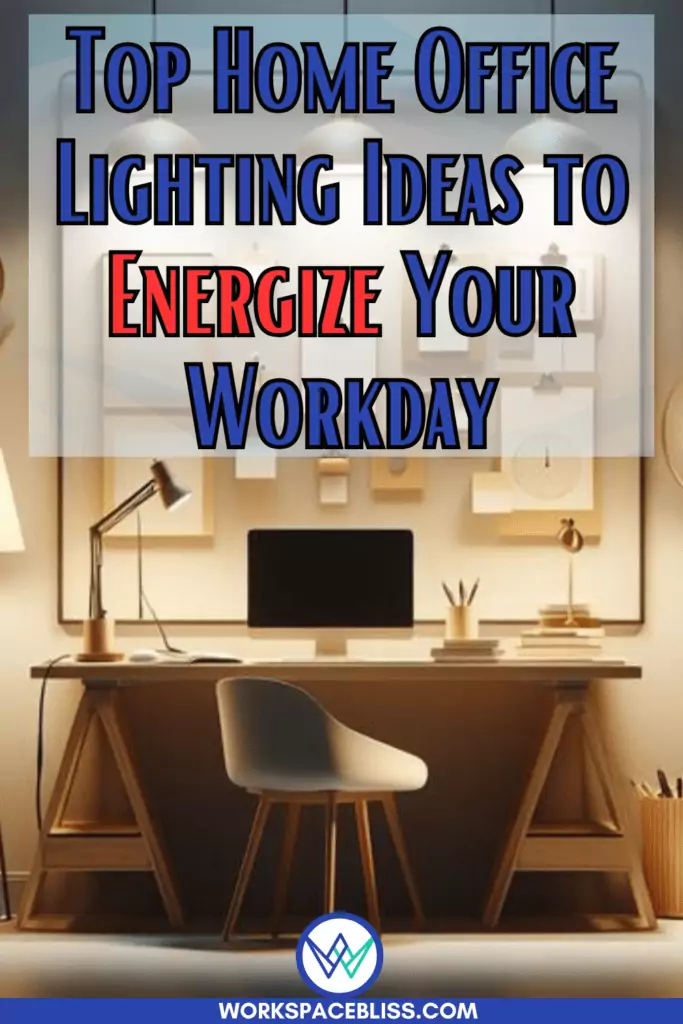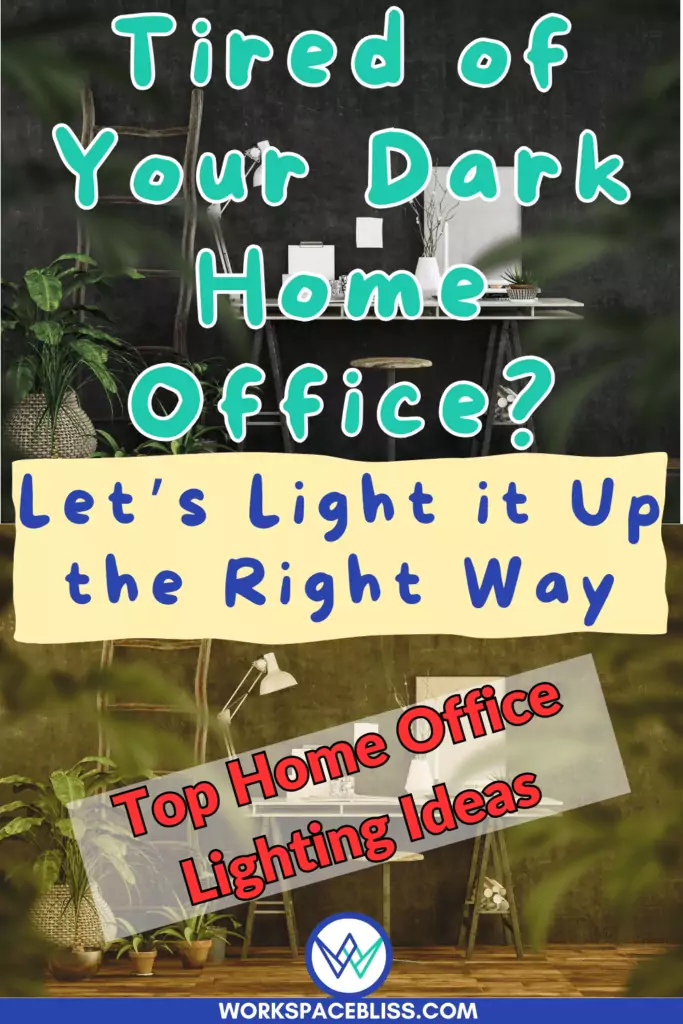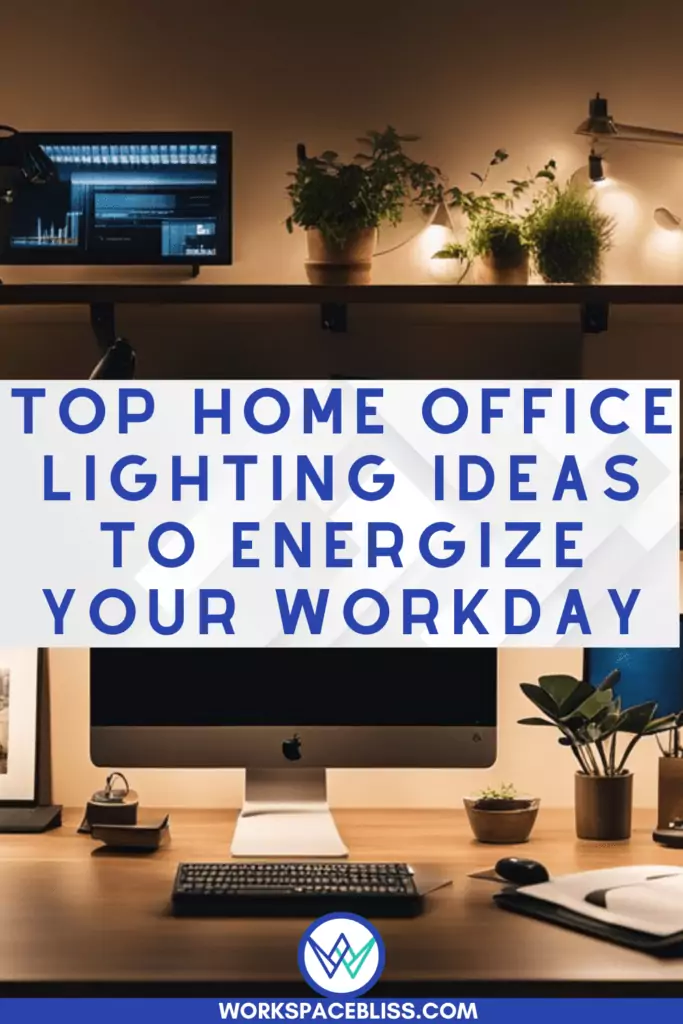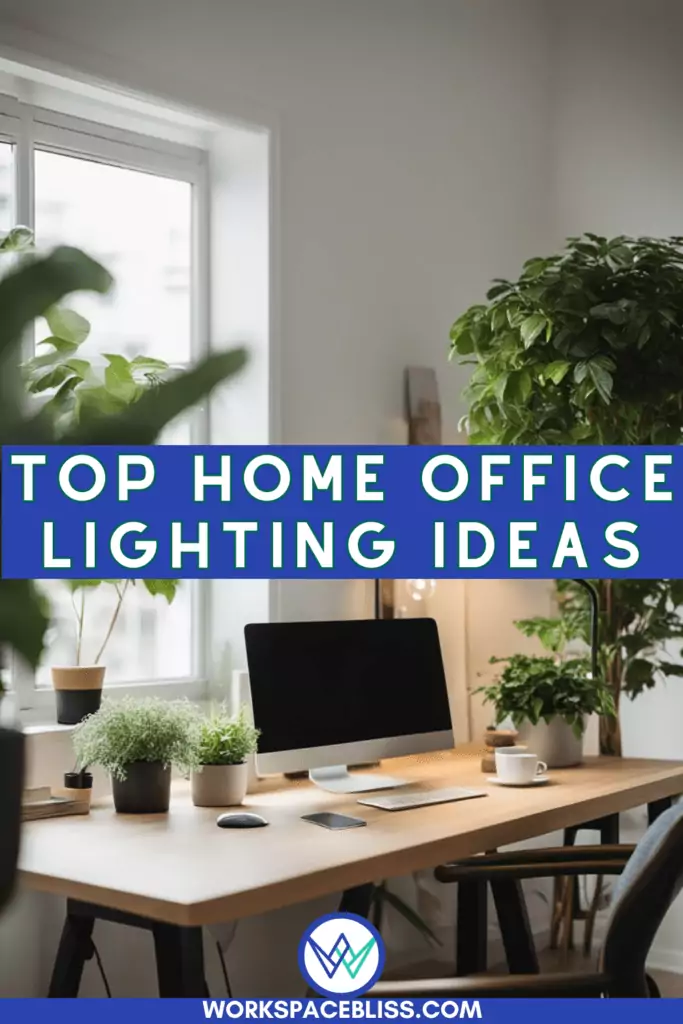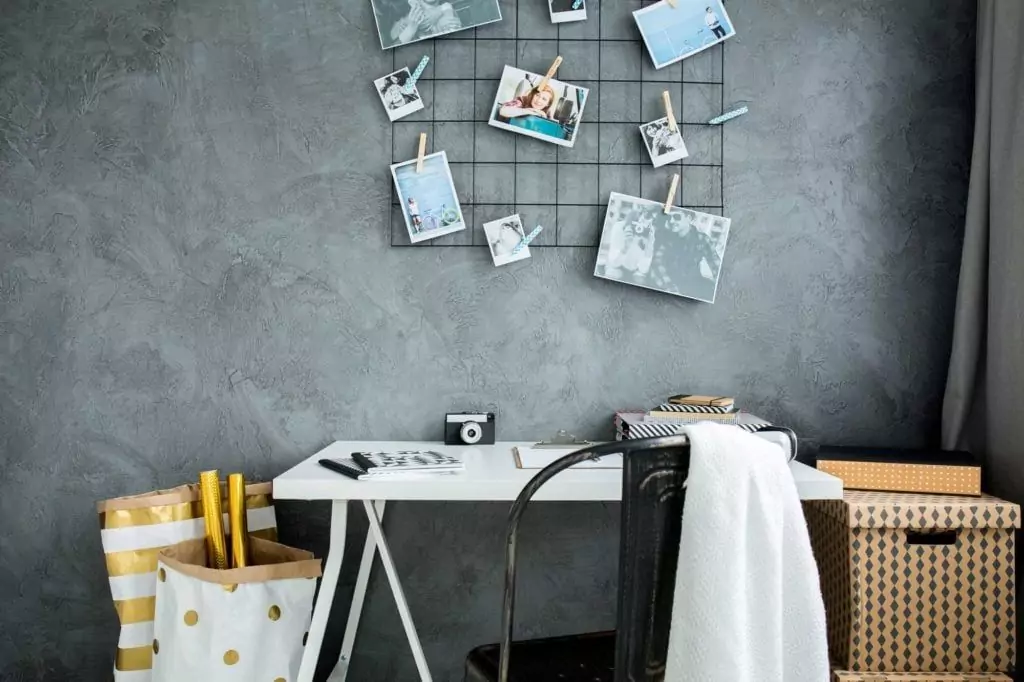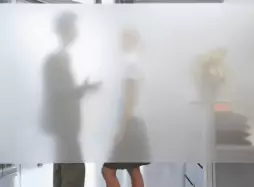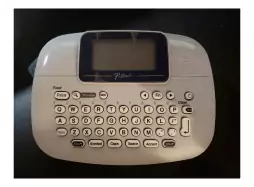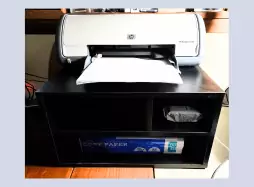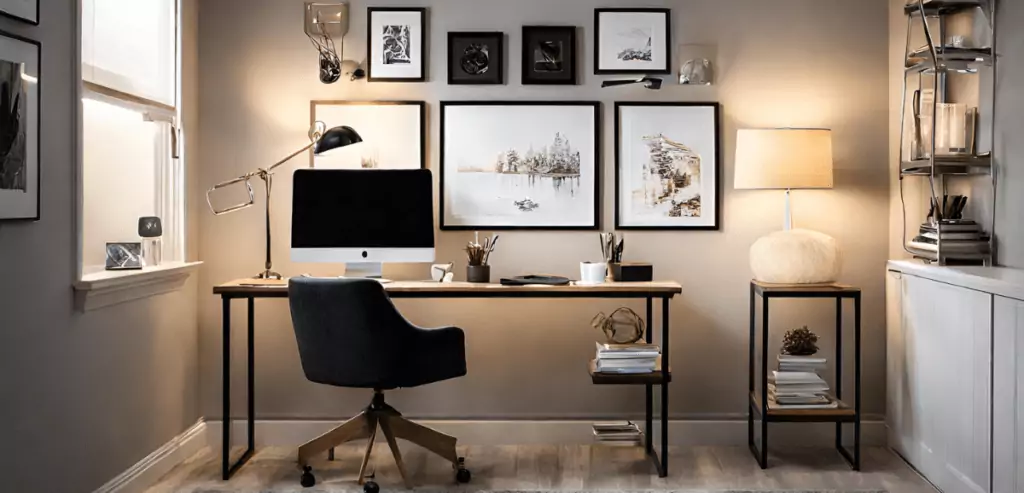
Working from home has many advantages. I’ve had the privilege of doing just that for many years on a regular basis. I know the difference of commuting into work and commuting from my bedroom to my home office.
It’s glorious. But we must make it a point to set up our home offices for success. There are a myriad of modern home office design ideas from which you can choose.
Or if your workspace is smaller than most, there are small office interior design ideas you could implement as well. Ensuring our home office is well-lit is half the battle to being productive in a work-from-home scenario.
Work from home office upgrades can be instrumental in your productivity. Home office lighting ideas play a critical role in creating a comfortable and effective home working environment.
With more people working remotely, especially since COVID showed that we could, the importance of a well-lit workspace has become increasingly evident.
Good lighting isn’t just about being able to see clearly; it’s about maximizing ease of work and minimizing eye strain throughout your work day. Light psychology has shown that workplace lighting affects mood, productivity, and your overall health.
Whether you’re spending most of the day in video conferences, software development, or focusing on detailed paperwork, the right lighting is of the utmost importance.
Fundamentals of Home Office Lighting
When setting up your home office, it’s imperative to create a lighting scheme that promotes efficiency and minimizes eye strain. Color temperature, brightness, and placement and direction of light are concepts you must fully understand to set up the proper home office lighting.
Color Temperature
Before I purchased my favorite LED desk lamp I didn’t really understand the concept of color temperature. When selecting light bulbs for your home office, you should be cognizant of color temperature which is expressed in Kelvin (K).
Bulbs with a lower Kelvin value emit a warmer, yellowish light, suitable for a cozy atmosphere, but may not be conducive to focused work. Bulbs labeled with a higher Kelvin value produce a cooler, bluish light, which resembles daylight and can help keep you alert, focused, and productive.
| Color Temperature | Kelvin Range |
|---|---|
| Warm White | 2000K – 3000K |
| Cool White | 3100K – 4500K |
| Daylight | > 4500K |
Brightness
Brightness in bulbs is measured in lumens—the higher the lumens, the brighter the light. A properly lit home office typically requires between 3,000 to 6,000 lumens in total, depending on its size and the natural light available.
Light bulbs over the years have evolved from in the following order: standard, halogen, CFL, and LED. LED is now the standard when it comes to lighting. A table below shows how the bulb types compare when it comes to wattage.
So, for a 100W standard light bulb, that you may remember from your younger years, is comparable to a 6W LED bulb. The big difference is that the rated life of the LED bulb is 12-25 years where the 100W standard light bulb has a rated life of 1 year.
| Brightness (Lumens) ↓ | Standard Bulb (Rated Life: 1 Year) | Halogen Bulb (Rated Life: 1-3 Years) | CFL Bulb (Rated Life: 6-10 Years) | LED Bulb (Rated Life: 12-25 Years) |
|---|---|---|---|---|
| 450 | 40W | 29W | 9W | 6W |
| 800 | 60W | 42W | 14W | 9W |
| 1100 | 75W | 53W | 18W | 11W |
| 1600 | 100W | 72W | 23W | 14W |
However, overly bright lighting may lead to headaches and eye fatigue, so balance is key. Consider using a combination of ambient and task lighting to achieve the right brightness levels.
- Ambient light: General lighting for overall illumination
- Task lighting: Focused, adjustable lighting for specific activities
Placement and Direction of Light
The correct placement and direction of lighting are vital to avoid shadows and glare that can cause eye strain. Position your monitor so that windows are to the side, rather than directly in front or behind it, to reduce glare.
In my home office my computer screen is facing a wall while a wall of windows is to my left. Even if it was a really bright day I could close my blinds to reduce any glare.
Use adjustable track lighting to highlight important areas without casting shadows over your workspace. If using a desk lamp, place it on the opposite side of your dominant hand to avoid casting shadows when you write.
Various Types of Home Office Lighting
Selecting the right type of lighting fixture for your home office is not only about aesthetics but also about functionality and comfort. Each fixture type offers a unique benefit that can enhance your workspace lighting.
Desk Lamps for Home Office
Desk lamps are a personal lighting solution to directly illuminate your work area. Choose a lamp with an adjustable arm and head which provides the flexibility to focus the light exactly where you need it.
I purchased a Taotronics LED desk lamp years ago for my office at work and bought the exact same version for my home office. Most of today’s LED desk lamps have charging ports (wireless and USB), multiple color modes and color temperature ranges (as discussed above), and are dimmable.
They also allow you to adjust the arm to many different angles and have a space-saving foldable design. Some examples of popular LED desk lamps can be seen below.
Home Office Ceiling Light Fixtures
Overhead lights serve as the primary source of illumination in a room. Consider a ceiling track light system that allows you to adjust each light’s direction, ensuring your entire office is well-lit.
I’ve had track lighting in my home office for years. What’s great about track lighting is that you can slide the bulbs wherever you like based on your home office setup. Since the ceiling light fixtures are also adjustable, you can also point them wherever you like.
Here are some of the latest innovative home office ceiling light fixtures available illuminating your workspace properly.
Home Office Floor Lamp Ideas
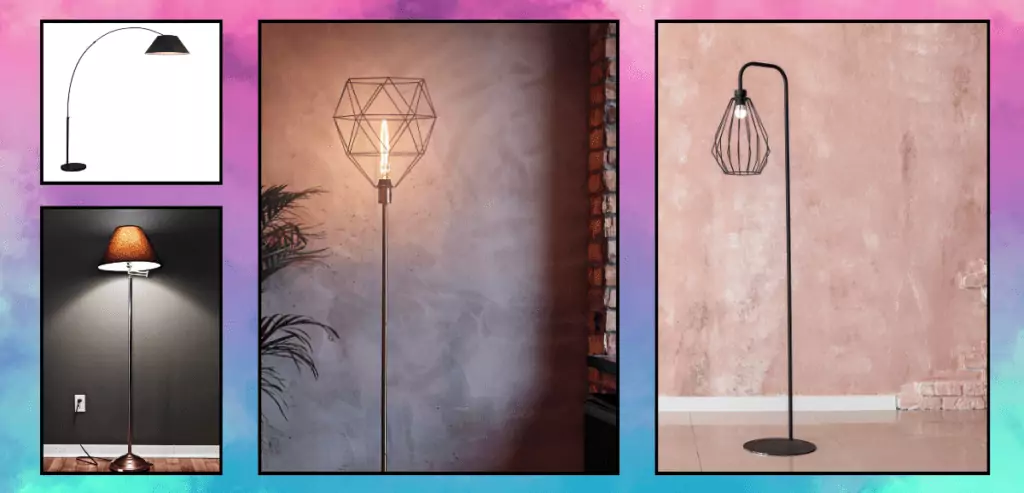
Floor lamps for a home office add ambient lighting or can be used to highlight a specific part of your office. They’re easily movable, so you can change your office layout without worrying about fixed installations such as overhead track lighting fixtures.
With fixed overhead lighting, once the electrical has been installed it would be a little difficult to move. But, at least with most track lighting, you can adjust the locations of bulbs which is an added plus if you decide to alter your office layout.
Years ago a coworker of mine had a floor lamp in his office at work and it made a huge difference to the ambiance of the workspace. He inspired me at that time to make my own office, or cubicle at that time, to be the best it can be. And I realized then how powerful office lighting can be.
Here are some home office lighting floor lamps that can make a real difference in your workspace.
Home Office Ambient Lighting
Setting the tone for home office lighting starts with ambient lighting. Floor lamps and dimmable overhead lighting which I’ve addressed above are the perfect compliments to setting the right tone. Those have already been addressed above so any of the floor lamps or overhead lighting can contribute to ambient office lighting.
I saw how important ambient lighting was years ago (as stated previously) with a floor lamp in a small office with no windows in the middle of an office building. A simple floor lamp, long before the days of LED lighting, set the tone and ambience in that space.
Home Office Accent Lighting
Home office accent lighting can be achieved to highlight a decorative wall hanging or an architectural feature in your office.
For accent lighting you might want to utilize an adjustable floor lamp, as seen here, to highlight a unique metal wall hanging. This metal wall hanging can be seen in my own home office.
You could also opt for wall-mounted wall fixtures such as wall sconces or overhead track lighting to draw attention to a DIY rustic bookshelf or artwork.
Wall sconces may require electricity and would have to be wired into your walls unless the unit was plugged in. Another option is to buy battery-operated rechargeable wall lights which will not require any electrical installation.
Here are some examples of accent lighting that you could incorporate into your own home office.
Creating a Productive Home Office Atmosphere
When setting up your home office, lighting plays an integral role in creating an environment conducive to focus and efficiency. Remember, the proper lighting not only helps prevent eye strain but can also significantly affect your mood and energy levels.
Avoid Glare and Shadows
To prevent glare and minimize shadows, position your light source behind your monitor and ensure it doesn’t shine directly into your eyes. If you have office windows and the windows are to your right or left adjust window blinds depending on the time of day to prevent glare and shadows.
Use focused task lighting for activities requiring focus, like reading or writing, to target light where you need it most without casting shadows over your workspace.
- Place lamps to the side of your work area.
- Consider a desk lamp with an adjustable arm. Many of the latest LED desk lamps shown previously do have adjustable arms.
Use Light to Enhance Mood
Lighting can drastically influence your mood, which in turn affects your productivity. Choose full-spectrum bulbs that mimic natural light to elevate your mood and energy. Simulating natural light in a windowless office is a challenge but it can be done with the proper lighting accessories.
- Embrace natural light as much as possible.
- Choose bulbs that offer a warm yet bright light to create a comfortable atmosphere.
Home Office Lighting Ideas – A Recap
Setting up your workspace for success can be achieved and home office lighting is probably one of the most important aspects of that space. Surrounding your work area with the proper desk lamp, floor lamp, accent lighting, ceiling light fixtures, and focused task lighting are the keys to any successful home office.
Do your homework and you can set up your home working area to be a productive, engaging, and motivating space to spend your countless working hours.
Bob has been blogging for over 20 years and has been an office and cubicle dweller for more than 35 years. He has been featured in numerous online publications such as US News and World Report, Bustle, and Work Awesome (you can read his articles here). He created the popular office website CubicleBliss in January 2011 and rebranded it as WorkspaceBliss in April 2020.
In the office he’s been an IT Manager, Applications Engineer, Systems Analyst, Software Project leader, and Programmer Analyst in his long career. He’s a Certified Microsoft Professional and possesses a Masters of Science degree and two Bachelor of Science degrees, one of those in Informational Technology.
During his career he has worked in the office full-time, as a hybrid remote worker, and has worked from home permanently.
